We use cookies to personalize content and advertisements, to offer social media functions and to analyze access to our website.
You can revoke the given consent at any time. You can find further information in our Privacy Policy.
Jan 2017
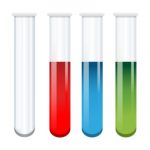 On January 12, 2017 the European Chemicals Agency (ECHA) published the new Candidate List, adding four new substances. The Candidate List now contains 173 substances of very high concern (SVHC).
The four new entries refer to:
4,4′-isopropylidenediphenol (bisphenol A, BPA) (EC 201-245-8), which was added to the list due to its toxic for reproduction properties. Bisphenol A is used in manufacturing of polycarbonate, epoxy resins, chemicals and as a hardener in epoxy resins.
Nonadecafluorodecanoic acid (PFDA) and its sodium and ammonium salts (EC 206-400-3 (sodium salt), EC 221-470-5 (ammonium salt)), which were added to the list due to their toxic for reproduction and persistent, bioaccumulative and toxic (PBT) properties. PDFA is used as plasticiser, lubricant, wetting agent and corrosion inhibitor.
p-(1,1-dimethylpropyl) phenol (EC 201-280-9), which was included to the list due to equivalent level of concern, having probable serious effects to environment. Substance is used in manufacturing of chemicals and plastic products.
4-heptylphenol, branched and linear, which was included to the list due to equivalent level of concern, having probable serious effects to environment. This substance is used in manufacturing of polymers and formulation into lubricants.
More information on https://echa.europa.eu/-/four-new-substances-of-very-high-concern-added-to-the-candidate-list
On January 12, 2017 the European Chemicals Agency (ECHA) published the new Candidate List, adding four new substances. The Candidate List now contains 173 substances of very high concern (SVHC).
The four new entries refer to:
4,4′-isopropylidenediphenol (bisphenol A, BPA) (EC 201-245-8), which was added to the list due to its toxic for reproduction properties. Bisphenol A is used in manufacturing of polycarbonate, epoxy resins, chemicals and as a hardener in epoxy resins.
Nonadecafluorodecanoic acid (PFDA) and its sodium and ammonium salts (EC 206-400-3 (sodium salt), EC 221-470-5 (ammonium salt)), which were added to the list due to their toxic for reproduction and persistent, bioaccumulative and toxic (PBT) properties. PDFA is used as plasticiser, lubricant, wetting agent and corrosion inhibitor.
p-(1,1-dimethylpropyl) phenol (EC 201-280-9), which was included to the list due to equivalent level of concern, having probable serious effects to environment. Substance is used in manufacturing of chemicals and plastic products.
4-heptylphenol, branched and linear, which was included to the list due to equivalent level of concern, having probable serious effects to environment. This substance is used in manufacturing of polymers and formulation into lubricants.
More information on https://echa.europa.eu/-/four-new-substances-of-very-high-concern-added-to-the-candidate-list
Jan 2017
 On December 19, 2016, the Member States Committee of the European Chemicals Agency (ECHA) has unanimously agreed on the identification of the following four substances of very high concern (SVHC):
4,4′-isopropylidenediphenol (bisphenol A) (EC 201-245-8), identified due to its toxic for reproduction properties. Bisphenol A is used in manufacturing of other substances, epoxy resins, coating materials, thermal paper and as antioxidant for processing of PVC.
Nonadecafluorodecanoic acid (PFDA) and its sodium and ammonium salts (EC 206-400-3), identified due to their toxic for reproduction and persistent, bioaccumulative and toxic (PBT) properties. PDFA is used as plasticiser, lubricant, surfactant, wetting agent and corrosion inhibitor.
4-heptylphenol, branched and linear (4-HPbl), identified due to its endocrine-disrupting properties for the environment. Polymers derived from 4-heptylphenol are used in lubricant activities for vehicles or machinery.
4-tert-pentylphenol (PTAP) (EC 201-280-9), identified due to its endocrine-disrupting properties for the environment. PTAP is used as an intermediate in the production of perfumes and fragrances and in the industrial formulation of adhesives, coatings, and paints.
ECHA will include the four new SVHCs to the REACH Candidate List in January 2017. Following the amendment, the Candidate List will contain 173 substances.
More information on https://echa.europa.eu/-/member-state-committee-issues-four-svhc-agreements-and-two-opinions
On December 19, 2016, the Member States Committee of the European Chemicals Agency (ECHA) has unanimously agreed on the identification of the following four substances of very high concern (SVHC):
4,4′-isopropylidenediphenol (bisphenol A) (EC 201-245-8), identified due to its toxic for reproduction properties. Bisphenol A is used in manufacturing of other substances, epoxy resins, coating materials, thermal paper and as antioxidant for processing of PVC.
Nonadecafluorodecanoic acid (PFDA) and its sodium and ammonium salts (EC 206-400-3), identified due to their toxic for reproduction and persistent, bioaccumulative and toxic (PBT) properties. PDFA is used as plasticiser, lubricant, surfactant, wetting agent and corrosion inhibitor.
4-heptylphenol, branched and linear (4-HPbl), identified due to its endocrine-disrupting properties for the environment. Polymers derived from 4-heptylphenol are used in lubricant activities for vehicles or machinery.
4-tert-pentylphenol (PTAP) (EC 201-280-9), identified due to its endocrine-disrupting properties for the environment. PTAP is used as an intermediate in the production of perfumes and fragrances and in the industrial formulation of adhesives, coatings, and paints.
ECHA will include the four new SVHCs to the REACH Candidate List in January 2017. Following the amendment, the Candidate List will contain 173 substances.
More information on https://echa.europa.eu/-/member-state-committee-issues-four-svhc-agreements-and-two-opinions
Dec 2015
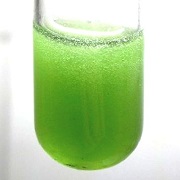 On 17 of December the European Chemicals Agency (ECHA) has added 5 new Substances of Very High Concern (SVHC) to the REACH Candidate List. The Candidate List now contains 168 substances.
The 5 new entries refer to:
Nitrobenzene (EC No. 202-716-0), which has been added to the list due to its reproductive toxicity properties. The substance is used in the manufacturing process of other substances, e.g. as an intermediate for further chemical processing.
2,4-di-tert-butyl-6-(5-chlorobenzotriazol-2-yl)phenol (UV-327) (EC No. 223-383-8) and 2-(2H-benzotriazol-2-yl)-4-(tert-butyl)-6-(sec-butyl)phenol (UV-350) (EC No. 253-037-1), which were added to the list because of their very persistent and very bioaccumulative properties. Both substances are used as UV-protection agents in coatings, plastics, rubber and cosmetics.
1,3-propanesultone (EC No. 214-317-9), which has been added to the list due to its carcinogenic properties. This SVHC substance is used as an electrolyte fluid of lithium ion batteries.
Perfluorononan-1-oic-acid and its sodium and ammonium salts (EC No. 206-801-3), which has been added to the list due to its persistent, bioaccumulative, toxic and reproductive toxicity properties. The substance is used as a: processing aid for fluoropolymer manufacture, lubricating oil additive, surfactant for fire extinguishers, cleaning agent, textile antifouling finishing agent, polishing surfactant, waterproofing agents and in liquid crystal display panels.
More information on http://echa.europa.eu/view-article/-/journal_content/title/five-new-substances-of-very-high-concern-added-to-the-candidate-list
On 17 of December the European Chemicals Agency (ECHA) has added 5 new Substances of Very High Concern (SVHC) to the REACH Candidate List. The Candidate List now contains 168 substances.
The 5 new entries refer to:
Nitrobenzene (EC No. 202-716-0), which has been added to the list due to its reproductive toxicity properties. The substance is used in the manufacturing process of other substances, e.g. as an intermediate for further chemical processing.
2,4-di-tert-butyl-6-(5-chlorobenzotriazol-2-yl)phenol (UV-327) (EC No. 223-383-8) and 2-(2H-benzotriazol-2-yl)-4-(tert-butyl)-6-(sec-butyl)phenol (UV-350) (EC No. 253-037-1), which were added to the list because of their very persistent and very bioaccumulative properties. Both substances are used as UV-protection agents in coatings, plastics, rubber and cosmetics.
1,3-propanesultone (EC No. 214-317-9), which has been added to the list due to its carcinogenic properties. This SVHC substance is used as an electrolyte fluid of lithium ion batteries.
Perfluorononan-1-oic-acid and its sodium and ammonium salts (EC No. 206-801-3), which has been added to the list due to its persistent, bioaccumulative, toxic and reproductive toxicity properties. The substance is used as a: processing aid for fluoropolymer manufacture, lubricating oil additive, surfactant for fire extinguishers, cleaning agent, textile antifouling finishing agent, polishing surfactant, waterproofing agents and in liquid crystal display panels.
More information on http://echa.europa.eu/view-article/-/journal_content/title/five-new-substances-of-very-high-concern-added-to-the-candidate-list
Sep 2015
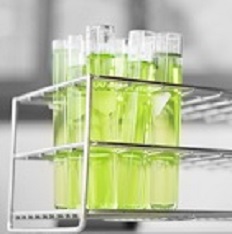 The European Court of Justice (ECJ) has published the long expected judgment on the decision regarding the threshold of 0,1 % of Substances of Very High Concern (SVHC) according to EU REACH Regulation on September 10, 2015.
Article 33 of EU REACH Regulation No 1907/2006, as amended, must be interpreted as follows: The supplier of a product which consists of one or more constituent articles which contain a substance of very high concern identified in accordance with REACH Article 59(1) in a concentration above 0.1% weight by weight of that article, has to inform the recipient and, on request, the consumer, of the presence of that substance by providing them, as a minimum, with the name of the substance in question.
The threshold of 0,1 % is no longer calculated on basis of the whole article (former ECHA interpretation), but of each single constituent article the product consists of. Suppliers of articles now have to review their compliance system (communication, data management etc.) with respect to the additional information requirements according to REACH Article 33.
1cc supports companies with handling of SVHC communication as well as further requirements according to the obligations ruled by REACH.
The European Court of Justice (ECJ) has published the long expected judgment on the decision regarding the threshold of 0,1 % of Substances of Very High Concern (SVHC) according to EU REACH Regulation on September 10, 2015.
Article 33 of EU REACH Regulation No 1907/2006, as amended, must be interpreted as follows: The supplier of a product which consists of one or more constituent articles which contain a substance of very high concern identified in accordance with REACH Article 59(1) in a concentration above 0.1% weight by weight of that article, has to inform the recipient and, on request, the consumer, of the presence of that substance by providing them, as a minimum, with the name of the substance in question.
The threshold of 0,1 % is no longer calculated on basis of the whole article (former ECHA interpretation), but of each single constituent article the product consists of. Suppliers of articles now have to review their compliance system (communication, data management etc.) with respect to the additional information requirements according to REACH Article 33.
1cc supports companies with handling of SVHC communication as well as further requirements according to the obligations ruled by REACH.
Jul 2015
 Nanomaterials are more and more used in cosmetics, pharmaceutics, paint and further products. The OECD has now completed a 7-year study on nanomaterials. The new findings shall be included into the current test-guidelines for nanomaterials.
In the EU, nanomaterials are in general covered by the REACH and CLP regulation; however they are not regulated in a special way. The European Chemicals Agency (ECHA) is already examining if separate rules are necessary for protection of the potential hazards of nanomaterials. Right now, ECHA has called on registrants to update their registration dossiers with the newly available information.
French regulation on nanomaterials
France has a specific regulation on registration and notification for nanomaterials since 2013. Manufacturers, Importers and distributors have to notify nanomaterials in an annual volume above 100 g to the agency in charge, ANSES.
France is expecting further EU-member states to follow the lead and specifies countries like Italy, Belgium and Denmark. Most information on the regulation is only available in French, so companies that seek help for a notification in France are invited to contact 1cc.
Nanomaterials are more and more used in cosmetics, pharmaceutics, paint and further products. The OECD has now completed a 7-year study on nanomaterials. The new findings shall be included into the current test-guidelines for nanomaterials.
In the EU, nanomaterials are in general covered by the REACH and CLP regulation; however they are not regulated in a special way. The European Chemicals Agency (ECHA) is already examining if separate rules are necessary for protection of the potential hazards of nanomaterials. Right now, ECHA has called on registrants to update their registration dossiers with the newly available information.
French regulation on nanomaterials
France has a specific regulation on registration and notification for nanomaterials since 2013. Manufacturers, Importers and distributors have to notify nanomaterials in an annual volume above 100 g to the agency in charge, ANSES.
France is expecting further EU-member states to follow the lead and specifies countries like Italy, Belgium and Denmark. Most information on the regulation is only available in French, so companies that seek help for a notification in France are invited to contact 1cc.
Jun 2015
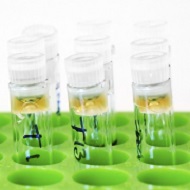 The European Chemicals Agency (ECHA) has added two new substances of very high concern (SVHC) to the REACH Candidate List. The Candidate List now contains 163 substances.
The two new entries refer to:
1,2-benzenedicarboxylic acid, di-C6-10-alkyl esters; 1,2-benzenedicarboxylic acid, mixed decyl and hexyl and octyl diesters with ≥ 0.3% of dihexyl phthalate (EC No. 201-559-5) which were added to the list due to their reproductive toxicity properties . These substances are used for example as plasticisers and lubricants, including use in adhesives, coatings, building material, cable compounding, polymer foils, PVC compounds and artist supply (e.g. modelling clay and finger paints).
5-sec-butyl-2-(2,4-dimethylcyclohex-3-en-1-yl)-5-methyl-1,3-dioxane [1], 5-sec-butyl-2-(4,6-dimethylcyclohex-3-en-1-yl)-5-methyl-1,3-dioxane [2] [covering any of the individual stereoisomers of [1] and [2] or any combination thereof]: This second SVHC has been added as a group entry with very persistent and very bioaccumulative properties. This group of substances covers, for example, the product with the trade name “karanal”. Public information sources indicate that karanal is mainly used as a fragrance ingredient.
More information on http://echa.europa.eu/view-article/-/journal_content/title/two-new-substances-of-very-high-concern-svhcs-added-to-the-candidate-list
The European Chemicals Agency (ECHA) has added two new substances of very high concern (SVHC) to the REACH Candidate List. The Candidate List now contains 163 substances.
The two new entries refer to:
1,2-benzenedicarboxylic acid, di-C6-10-alkyl esters; 1,2-benzenedicarboxylic acid, mixed decyl and hexyl and octyl diesters with ≥ 0.3% of dihexyl phthalate (EC No. 201-559-5) which were added to the list due to their reproductive toxicity properties . These substances are used for example as plasticisers and lubricants, including use in adhesives, coatings, building material, cable compounding, polymer foils, PVC compounds and artist supply (e.g. modelling clay and finger paints).
5-sec-butyl-2-(2,4-dimethylcyclohex-3-en-1-yl)-5-methyl-1,3-dioxane [1], 5-sec-butyl-2-(4,6-dimethylcyclohex-3-en-1-yl)-5-methyl-1,3-dioxane [2] [covering any of the individual stereoisomers of [1] and [2] or any combination thereof]: This second SVHC has been added as a group entry with very persistent and very bioaccumulative properties. This group of substances covers, for example, the product with the trade name “karanal”. Public information sources indicate that karanal is mainly used as a fragrance ingredient.
More information on http://echa.europa.eu/view-article/-/journal_content/title/two-new-substances-of-very-high-concern-svhcs-added-to-the-candidate-list
Apr 2015
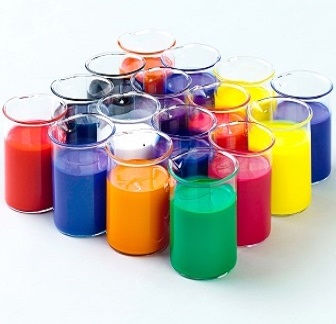 Article 33 of the REACH Regulation requires manufactures and importers of articles containing more than 0.1 percent of an SVHC (Substance of Very High Concern) to pass on this information within the distribution chain.
According to Article 7 (2), ECHA has to be notified accordingly. The European Court of Justice (EJC) is currently in the process of clarifying whether the 0.1 percent threshold refers to the entire weight of the article or to each component (legal proceeding C-106/14).
Whilst according to the guidance of the EU Commission and ECHA, the 0.1 percent threshold should refer to the entire weight of an article, six EU Member States – Austria, Belgium, Denmark, Germany, France and Sweden – and Norway followed the interpretation according to the rule “once an article, is always an article”. This means that the 0.1 percent threshold should be based on the weight of the single component of an article.
Article 33 of the REACH Regulation requires manufactures and importers of articles containing more than 0.1 percent of an SVHC (Substance of Very High Concern) to pass on this information within the distribution chain.
According to Article 7 (2), ECHA has to be notified accordingly. The European Court of Justice (EJC) is currently in the process of clarifying whether the 0.1 percent threshold refers to the entire weight of the article or to each component (legal proceeding C-106/14).
Whilst according to the guidance of the EU Commission and ECHA, the 0.1 percent threshold should refer to the entire weight of an article, six EU Member States – Austria, Belgium, Denmark, Germany, France and Sweden – and Norway followed the interpretation according to the rule “once an article, is always an article”. This means that the 0.1 percent threshold should be based on the weight of the single component of an article.
Dec 2014
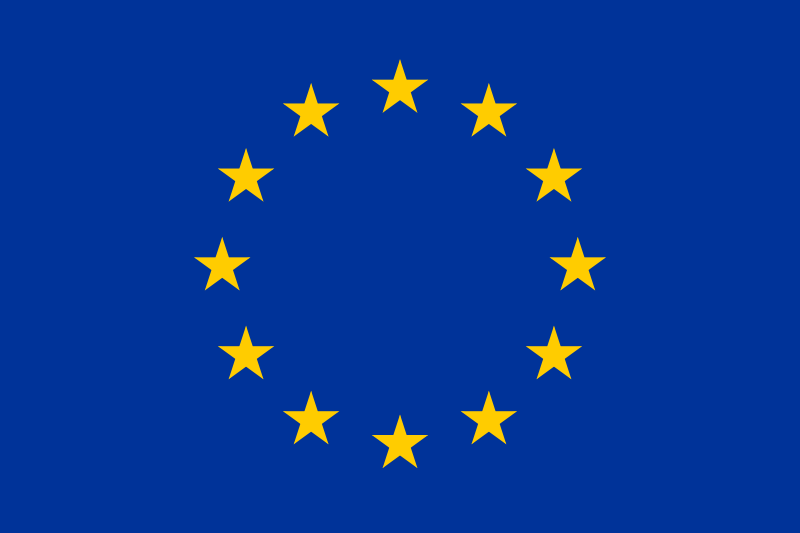 Today, six new SVHCs have been added to the REACH Candidate List by ECHA; and one existing entry has been updated.
Cadmium fluoride and cadmium sulphate are added to the Candidate List as being “Carcinogenic”, “Mutagenic”, “Toxic for reproduction” and are also identified as being of “Equivalent level of concern based on probable serious effects to human health” (specifically due to the effects on kidney and bone).
Two benzotriazole substances (UV-320 and UV-328) are identified as being “persistent bioaccumulative and toxic and very persistent and very bioaccumulative (PBT/vPvB)”.
Two further substances, DOTE and the reaction mass of DOTE and MOTE are identified as being “Toxic for reproduction”.
The Member State Committee also unanimously agreed that bis(2-ethylhexyl) phthalate (DEHP) meets the criteria for identification as an SVHC under Article 57(f) due to its endocrine disrupting properties causing probable serious effects to the environment. As DEHP is already included in the Candidate List based on its toxic for reproduction properties, this entry will be updated to address the additional reason for inclusion.
As DEHP is already listed in the Authorisation List (Annex XIV), companies that were initially exempt from the authorisation requirement may, in the future, be subject to authorisation. However, before this could happen, the European Commission would need to amend the corresponding entry for DEHP in the Authorisation List.
Today, six new SVHCs have been added to the REACH Candidate List by ECHA; and one existing entry has been updated.
Cadmium fluoride and cadmium sulphate are added to the Candidate List as being “Carcinogenic”, “Mutagenic”, “Toxic for reproduction” and are also identified as being of “Equivalent level of concern based on probable serious effects to human health” (specifically due to the effects on kidney and bone).
Two benzotriazole substances (UV-320 and UV-328) are identified as being “persistent bioaccumulative and toxic and very persistent and very bioaccumulative (PBT/vPvB)”.
Two further substances, DOTE and the reaction mass of DOTE and MOTE are identified as being “Toxic for reproduction”.
The Member State Committee also unanimously agreed that bis(2-ethylhexyl) phthalate (DEHP) meets the criteria for identification as an SVHC under Article 57(f) due to its endocrine disrupting properties causing probable serious effects to the environment. As DEHP is already included in the Candidate List based on its toxic for reproduction properties, this entry will be updated to address the additional reason for inclusion.
As DEHP is already listed in the Authorisation List (Annex XIV), companies that were initially exempt from the authorisation requirement may, in the future, be subject to authorisation. However, before this could happen, the European Commission would need to amend the corresponding entry for DEHP in the Authorisation List.
Oct 2014
 The European Commission issued on 9 August 2014 its first decision to authorise a specific use of plasticiser Bis(2-ethylhexyl) phthalate (DEHP) during the diffusion bonding and manufacture of aero engine fan blades.
According to Decision 2014/C 260/10 the risk is adequately controlled in accordance with Article 60(2) of Regulation (EC) No 1907/2006. Furthermore, there are no suitable alternatives at present and search for technically feasible alternatives is ongoing under a 5 to 10 year research programme. The authorisation is valid until February 21, 2022. Holder of the authorisation is Rolls-Royce plc in the United Kingdom.
The European Commission issued on 9 August 2014 its first decision to authorise a specific use of plasticiser Bis(2-ethylhexyl) phthalate (DEHP) during the diffusion bonding and manufacture of aero engine fan blades.
According to Decision 2014/C 260/10 the risk is adequately controlled in accordance with Article 60(2) of Regulation (EC) No 1907/2006. Furthermore, there are no suitable alternatives at present and search for technically feasible alternatives is ongoing under a 5 to 10 year research programme. The authorisation is valid until February 21, 2022. Holder of the authorisation is Rolls-Royce plc in the United Kingdom.
Sep 2014
 Nine new substances were added to the Authorisation List (Annex XIV) of the REACH Regulation on August 19, 2014. These Substances of Very High Concern (SVHC) had been prioritised by ECHA in January 2013 and are used, for instance, as solvents, anti-corrosion or curing agents.
The sunset dates range from August 22, 2017 to January 22, 2019. If manufacturers want to use one of the newly added substances after the sunset date, they have to apply for an authorization 18 months before the respective sunset date.
With these nine new entries, the Authorisation List currently contains a total of 31 Substances of Very High Concern.
Link to the news substances as listed in the Annex of Commission Regulation (EU) No. 895/2014.
Nine new substances were added to the Authorisation List (Annex XIV) of the REACH Regulation on August 19, 2014. These Substances of Very High Concern (SVHC) had been prioritised by ECHA in January 2013 and are used, for instance, as solvents, anti-corrosion or curing agents.
The sunset dates range from August 22, 2017 to January 22, 2019. If manufacturers want to use one of the newly added substances after the sunset date, they have to apply for an authorization 18 months before the respective sunset date.
With these nine new entries, the Authorisation List currently contains a total of 31 Substances of Very High Concern.
Link to the news substances as listed in the Annex of Commission Regulation (EU) No. 895/2014.